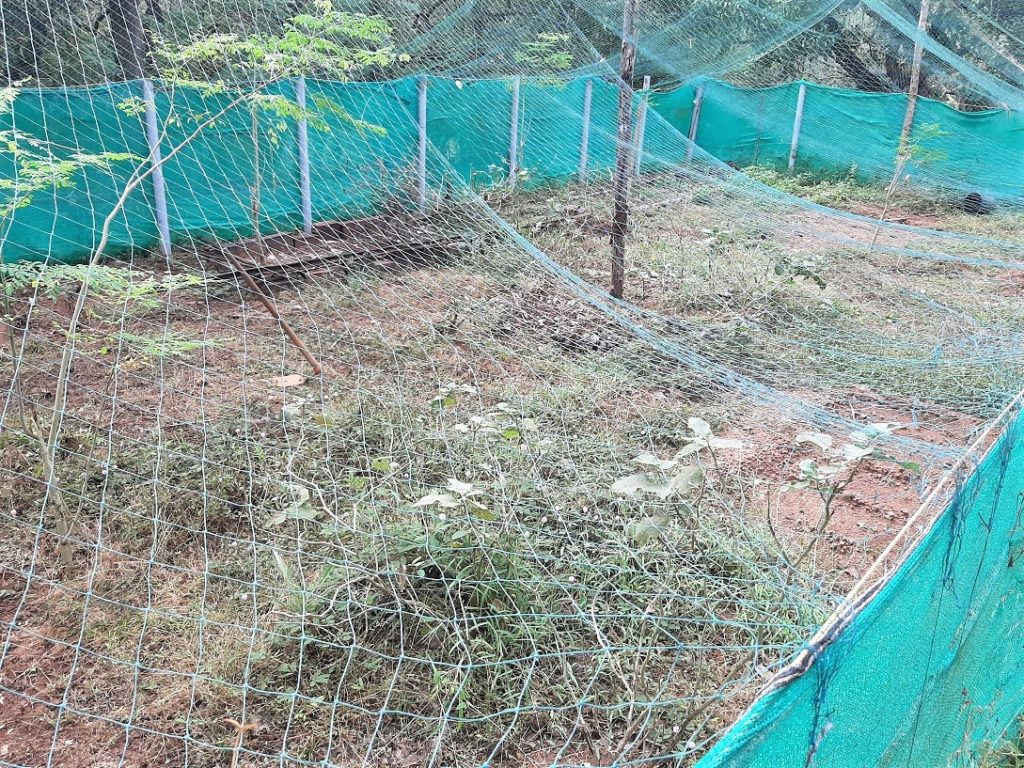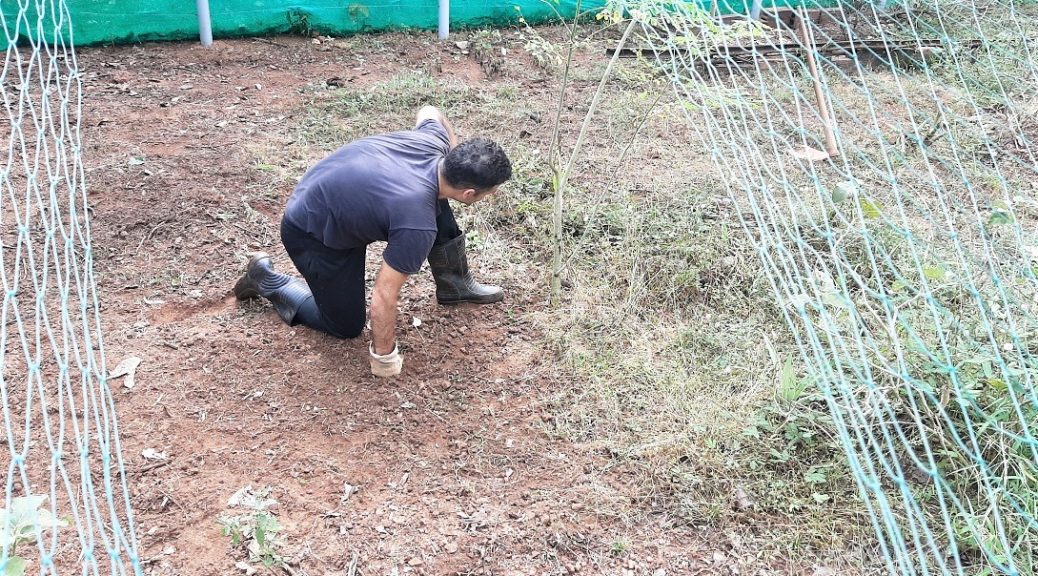
Permaculture at CEL, Kundapur
Permaculture is a fundamental part of “Sustainable Agriculture” and it is what we have adopted at the “Centre for Experiential Living” (CEL), Kundapur. It is a whole system for providing human needs, using natural resources by maintaining its state of resilience, avoiding the use of limited resources.
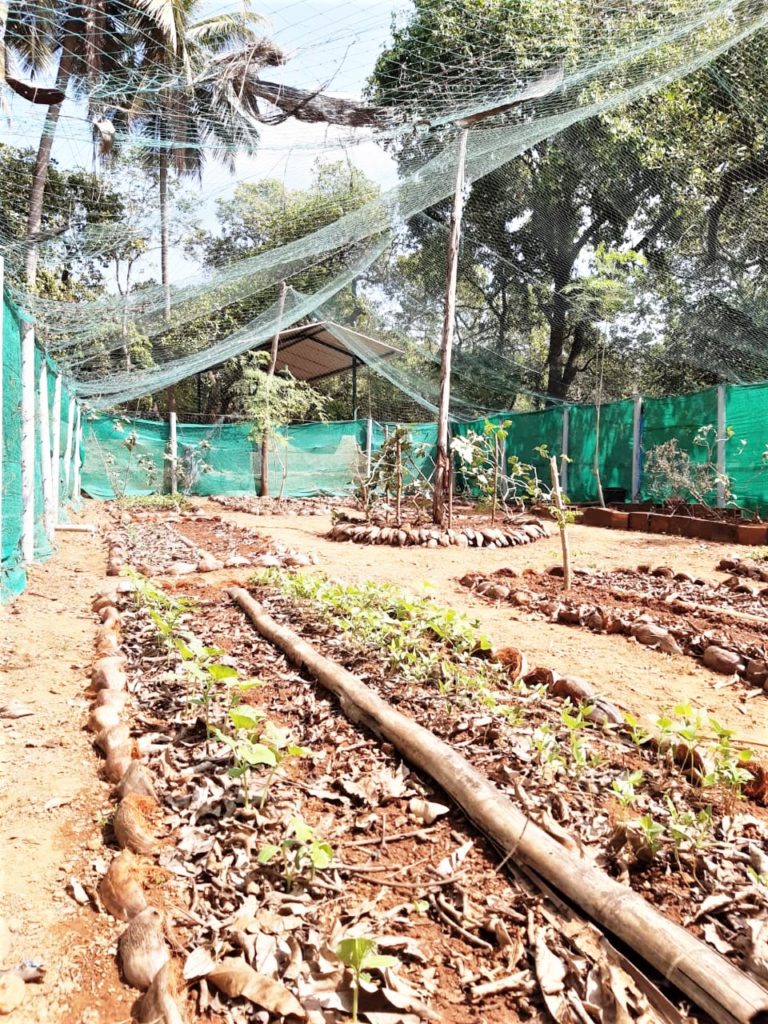
During December 2019, we reset the organic garden of the Centre using an organic “Synergic” method, based on the respect of the natural cycle, re-use of the resources already existing around the site, and applying the right combination of elements and cultures which collaborate with each other to increase the quality and the productivity of the vegetable garden in a natural way. This way also reduces the waste of resources and the excess of human work.

For the first act, we had to fix the soil, so we removed all the weeds from it for a couple of days. Then, we dug deep into the soil and took out all the rocks, trying to maintain the pre-existing healthy cultures, like Tulsi plants, Moringa trees and some Eggplants.

After the first work on the soil, we designed and marked the shape of the cultivation beds, in order to use as much of the available space as possible, with the right sizes for an ergonomic work and leaving the necessary spaces for worker passage.
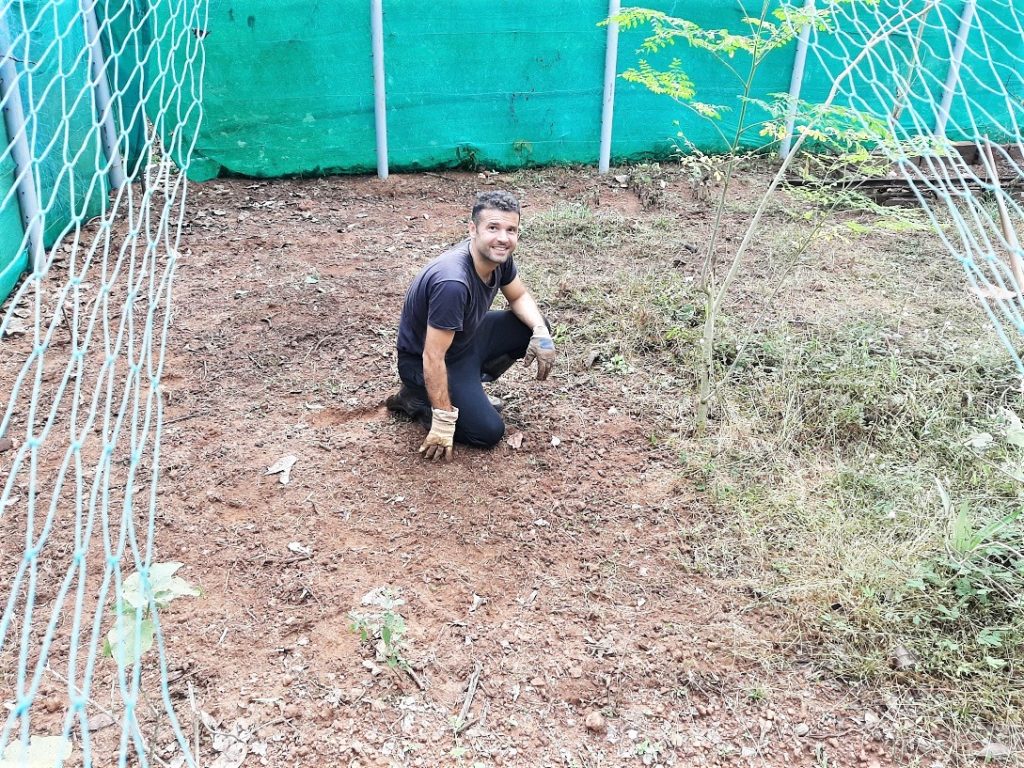
We designed 10 cultivation beds with a round space bed in the centre for flowers and aromatic plants; we defined the perimeters of the beds with cut coconuts. To fertilise the soil, we used compost made of gardening waste, harvesting, and vegetable cooking, mixed with soil and dung, and left it to decompose for some months in the compost area, before use.
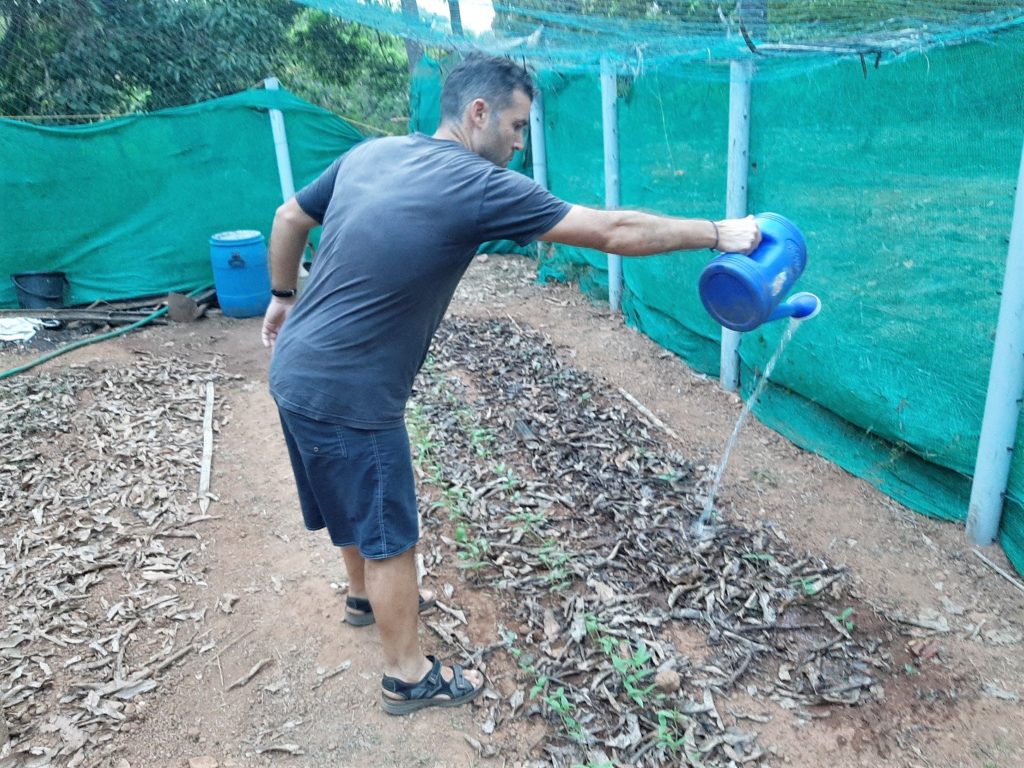
So, we added the compost to the soil and hoed and leveled it. Further fertilisation will be made by the decomposition of the mulching. To compose a right, organic synergic garden, it is really important to combine the symbiotic cultures well, which help each other and improve by their roots the structure and the quality of the soil; avoiding to pair the competitors cultures that absorb the same nutritional elements. In this way, we preserve the soil from overuse.

The use of legume plants is fundamental to increase the productivity of the garden, as they don’t need any particular nutrition, and fix the nitrogen to the soil by their chemical process. To do so, we planted a kind of legume culture into almost all the cultural beds, with the purpose to rotate its position in the next season.

To help the garden to preserve itself, we planted some particular flowers like Marigold, Calendula and Nasturtium, which have the property to attract the right kind of insects, which help to fight the pests – the aphids, as they are competitors of bed insects. And, they also help in pollination.
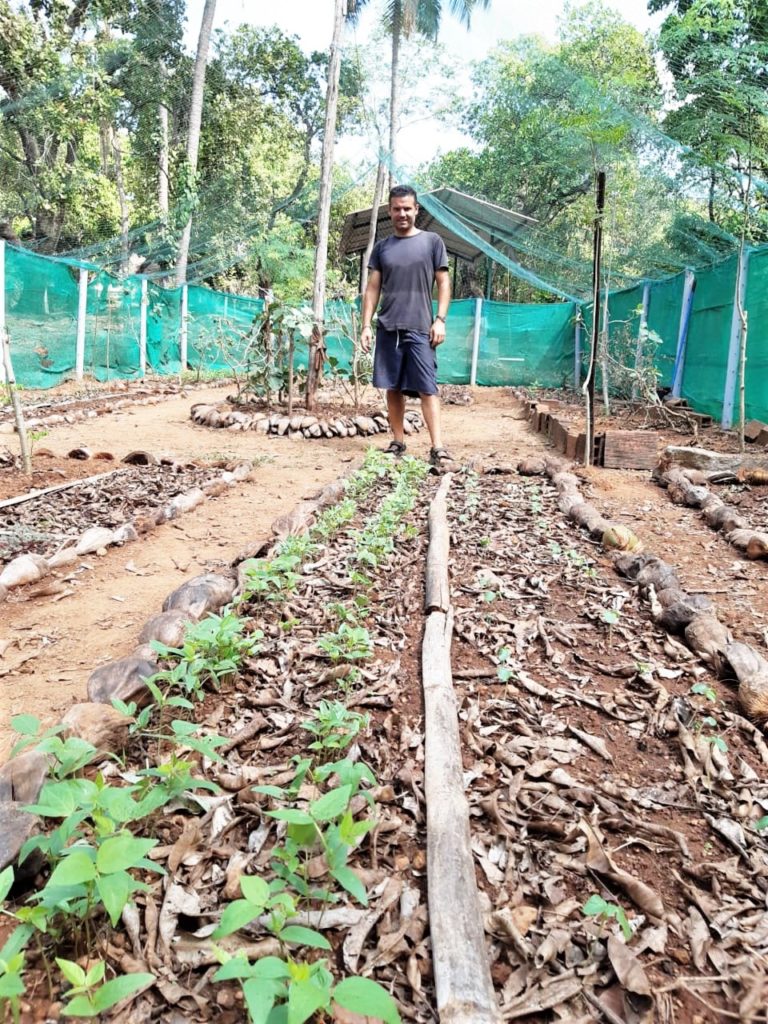
We put the seeds into the soil, dividing the single bed into 2 sectors, mainly for 2 rows of legumes and the other for the symbiotic culture, according to my knowledge and previous experience.

To preserve and nurture the soil, help to maintain the right humidity and reduce the use of the water, we applied the mulching. Mulching is a sort of organic, protective layer put on the soil that preserves it, maintains humidity and creates an ideal habitat for the symbiotic organism in the soil.

In the CEL garden, we use mango leaves and coconut husks to cover the soil after seeding. This mulching, with its degradation, provides further humus and fertilisation to the garden soil. For this reason, is important to renew it regularly! We are eagerly waiting to harvest what we have planted in the soil of contemplation.
